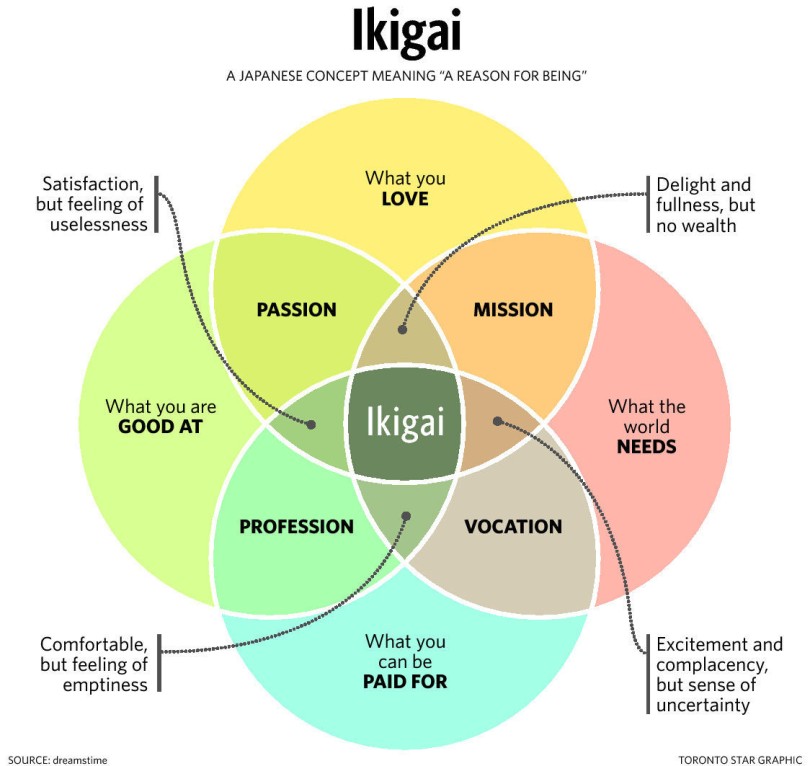If you want to know how to find your Ikigai without using the Ikigai Diagram, this is the blogpost you are looking for.

In the last post, I said that the diagram which became the symbol of Ikigai may not always be useful to find your Ikigai if you don’t know about yourself. It is important to first deprogram yourself from the social conditioning.
Today, I will share with you another concept to help you find your Ikigai. That is Sanpo-Yoshi.
What is Sanpo-Yoshi?
Sanpo-Yoshi is a philosophy of Omi-merchants who were considered to be the most successful merchants in Japan from the medieval period to 18th century. This philosophy stated that every business the Omi merchants conducted needed to be beneficial to the seller, the buyer, and society in general. In short, a business must result in a three-way satisfaction.
Sanpo means three directions and Yoshi means good or happy and Sanpo-Yoshi contains three Yoshi.
Urite-Yoshi: This means the seller is happy
Kaite-Yoshi: This means the buyer is happy
Seken-Yoshi: This means society is happy.
This is a concept in business, but we can apply it in other fields, too. For example, in ZENWSP, we apply it in pursuit of happiness.
Jibun-Yoshi: I am happy
Aite-Yoshi: You are happy
Seken-Yoshi: Society is happy.
You, in this case, means people around you such as your family. When you feel Ikigai, it is better to feel it in an activity which doesn’t just make you happy, but also makes your family happy. For example, instead of feeling your Ikigai in playing golf, which either you do alone or with your co-workers, you can feel your Ikigai in going for walks with your family. In this way you can feel happy and so can your family. It also makes society happy since it is environmentally friendlier than playing golf on a golf course, which was probably built by destroying a forest.
Another example is that instead of finding your Ikigai in your work and giving 100% of your time and energy into it, which is often described in the context of Ikigai as in Japanese craftsmanship, you can find your Ikigai in the work-style that includes time for your family. Instead of finding your Ikigai in achieving perfection as a craft, and not paying attention to other elements such as the ingredients, you can shift your focus to your ingredients being environmentally friendly or not.
So, when you think about your life mission, you can think of it in this context.
Does it make society happy? (which you probably do think about since you regard your mission to be somewhat philanthropic, right?)
But, does it also make your family and close friends happy? (are you not sacrificing your family for it?)
Does it make you happy? (do you enjoy it enough to continue doing it even though it is valuable to the world?)
Click here to get a free newsletter Zen and a Way of sustainable prosperity: Balance, financial success, and sustainability with the secrets of the Japanese Omi-merchants.

2 comments